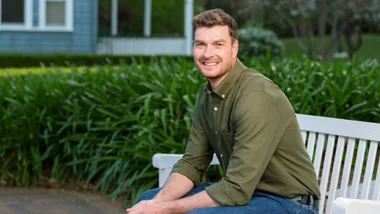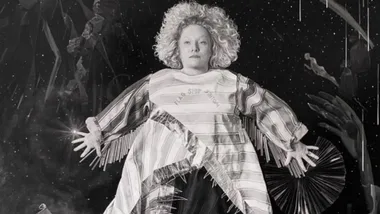The wine is flowing (Burgundy, red). The music is pumping (’90s hip-hop). The laughs are rolling (long and loud). My girlfriends and I are hacking into cheese platters at a buzzy city bar on a Friday night, catching up on the week and delighting in each other’s tales and triumphs. Or are we? As we go around the table, I can’t help but sense a swirling undercurrent of gloom. One friend is in house-hunting hell and has just lost out at an auction to baby-boomer investors – again; another is miserably chewing on spinach before she heads to Bali for a wedding; the other feels locked in a job she hates. And me? I’m the resident green-eyed monster. I quietly envy my friends’ well-deserved victories – great boyfriends, cushy salaries – and I’m stressed out and exhausted by a never-ending stream of deadlines.
Behind the bright veneer, we’re hardly an upbeat bunch. And it turns out we’re not alone. According to a recent global study, 65 per cent of Australian millennials (broadly defined as those aged 18 – 35) fear they’ll never be as happy as their parents*. Some point to the dream of home ownership slipping further and further from their well-manicured fingers, while others feel smothered by a perpetual pressure to be perfect. On top of that, we’ve come of age amid economic tension, terrorism and the ever-present threat of Trump.
So the following week, when my editor commissions me to partake in a happiness challenge and write about it, I can’t flash my pearly whites fast enough. The brief? To complete Yale University’s free “The Science of Well- Being” course and see if it gives me a much-needed serotonin boost.
The class is the brainchild of Professor Laurie Santos, who’d noticed an influx of high-achieving, high- anxiety Yale students and wanted to teach them about positive psychology and how to apply it to their own lives. Overnight it became the Ivy League institution’s most popular course ever (1200 enrolled for the first semester in January 2018), and now a condensed version is available online for everyday joy-seekers like myself.
As I click into the course I feel a sudden surge of responsibility to crack the happiness code. After all, we’re the generation who can live rent-free until we’re 30, order pho on our phones and binge-watch Queer Eye 2.0 through a haze of happy tears – luxuries our parents were never afforded. Surely we can find a way out of this funk.
Seizing The Day
Oh Sydney, what a day to kick off my quest. The skies have opened to bucketing rain, and not in a romantic Nicholas Sparks-movie kind of way. By the time I get to the station, my shoes are soggy, my umbrella’s inverted, and – surprise, surprise – a train has broken down, leaving hundreds of commuters stranded on the platform.
My first assignment via last night’s lecture is to practise savouring the everyday – it keeps us in the moment and increases gratitude. But given the morning’s mediocre start, I decide to try one of Santos’ other techniques: visualising a happy memory. I close my eyes and cast my mind back to a holiday earlier this year. Suddenly I’m in the middle of the Californian desert, all pink skies and palm trees, dancing to the dreamy beats of Odesza at Coachella. By the time I open my eyes, the sea of disgruntled commuters have morphed into free-spirited festival-goers swaying at sunset. I feel lighter already.
Another of last night’s tasks was to measure my preliminary happiness by choosing from a series of statements to describe myself, eg, I have more joy than sorrow in my life; I feel close to some people. On a scale of one to five, I came out at 3.29, placing me just above average in the life satisfaction stakes.
Happiness, I learn, is 50 per cent genetic, and I think I’ve been blessed with some fairly cheery DNA. But still, who wants to be average? I want to experience the heart-stopping highs, a buoyancy of spirit, that warm, fuzzy feeling that swells in your core.
Lucky, then, that 40 per cent of happiness is within our own control (the remaining 10 per cent comes down to life circumstances). And one of the most effective ways we can boost it is to count our blessings. Writing a daily gratitude list can increase long-term wellbeing by more than 10 per cent, plus it’s a killer of envy. And – save the eye rolls – it doesn’t have to be drowning in worthiness.
That evening I give thanks for my hot shower, my family’s health and the way my baby nephew coos my name. Then I settle in on the couch and savour spoonfuls of peanut butter straight from the jar in front of The Real Housewives of Cheshire (the chavvy British version of the global reality TV franchise). Call the Dalai Lama, this happiness thing is a cinch.
The Wanting Myth
Scratch that. It turns out that last night’s binge session did nothing for my mood. As Santos reveals in the next lecture, the more television you watch, the less happy you are. Our screens are swarming with glammed-up, cashed up figures, and apparently this skews our perception of other people’s wealth and leaves us feeling inadequate.
This is where the course gets real. “All the things that you think make you happy,” Santos announces, “they don’t.” Good grades, high-power jobs, a perfect body, nice things … “Forget it.”
It’s obvious, really. Of course superficial stuff isn’t the answer, but how many of us actually believe it? And what about that delightful rush of dopamine I feel when I add a Viktoria & Woods blazer to my cart? Like a crack addict’s fix, it doesn’t last. Hedonic adaptation, Santos explains, is the way wonderful things quickly lose their lustre. After the initial buzz of unwrapping a Net-a-Porter package (or getting a pay rise), it becomes the new normal and we’re left wanting more. And more.
I resolve to abstain from online shopping – even browsing – while I complete the course. Usually I visit zara.com like it’s going out of fashion (in fairness, the clothes kind of are), but once I stop I realise the habit is entangled with low-level anxiety and remorse. So what should I do instead? “Invest in experiences,” Santos says firmly, as we chat over the phone one evening. She cites numerous studies that show a weekend away sparks more long-term joy than a designer handbag. I wonder, though, if the theory really rings true for bigger, boxier investments. “Research suggests that [even] large purchases such as homes don’t make us as happy as we forecast,” she continues, dismantling the great Australian dream in a snap. Getting a set of keys will, of course, afford a significant sense of security, but it won’t make us as happy as we think.
I want to call my friends: tear up your house deposit and book a flight to Mexico; eat the carbs; quit your job and become a cake decorator. Even true love, society’s preferred measure of “happily ever after”, isn’t as uplifting as we expect. Most couples become more satisfied in the first two years of marriage, but after that their happiness returns to the same base level as before. I guess that means I can delete Bumble? It brings the most gratification I’ve felt all week.
The Social Network
I’m sitting cross-legged, eyes closed, palms facing upwards on my knees. This is the position I’ve come to assume every time my wandering thumb feels the powerful pull of Instagram.
Santos has ordered us to shut off our socials (and the 18-year-olds in the video lecture do not look impressed). One paper on social comparison says this alone could make us twice as happy as scoring a high-income job.
It’s not hard to see why: a daily onslaught of #fitspo bikini bodies and cool parties you’re not invited to is hardly a boon for self-esteem. Depression and anxiety in young people have risen dramatically since 2012, coinciding with, you guessed it, the advent of smartphones.
Comparatively, I’m far from a social media addict, but the number of times I find myself going in for a cheeky scroll over the week is alarming. With a bit of space I also start to question my usage – why do I stalk that pouty-lipped influencer with less substance than a Jatz cracker? Really, why? Letting go of it all definitely brings some levity – and I vow to cull post-challenge. Trust me, you don’t miss the Instagram models.
The flipside of our tech dependency is loneliness. Very happy people are proven to spend more time engaging with others – and they’re not afraid to step outside their social circle. Usually, I’d rather stab myself in the eye than strike up a conversation with a stranger, but in the name of research I give it a go. Instead of rushing to my desk each morning, I stop and chat to our lovely, bubbly receptionist, and I make an effort to smile at strangers in the hallway (eye contact, people!). Like a lot of happiness hacks (exercise, early nights), these small social interactions can be effortful and uncomfortable. But the tiny surge of endorphins is real.
Over the next few days I find the corners of my mouth turning upwards for no particular reason, and I let inconsequential niggles wash over me. Until life gets in the way. Later that week the anniversary of my dad’s passing rolls around and no amount of journalling or savouring can lift my spirits. I just want to curl up in the foetal position and rock myself gently. It’s a lucid reminder: happiness is not some end point we suddenly arrive at, like an exclamation point to a dreary sentence. It peaks and troughs, ebbs and flows, and we have to keep working at it, whatever our age or generation.
That Friday I don my virtual cap and gown and graduate from happiness school. I had to cram the two-month course into 10 days, because, deadlines. (On that note, dear editor, I apologise. For the first time in my life, I didn’t file my story on time. But, you see, career accolades don’t equal contentment.) I meet my friends for a celebratory drink and tell them about my hopes and plans for them. They seem bemused, albeit open, and sit and listen to me jabber on about hedonics and perfectionism until it all gets too heavy and we make our way to the dance floor. I think that deep down most of us know we’re looking for happiness in all the wrong places, we’re just afraid of what might happen if we take the leap and forge our own messy and unexpected course.
In the morning, I remeasure my happiness and come out at an improved 3.63, which puts me in the 80th percentile for my age group. I should be, well, happy. But I’m a millennial; I want a flawless five out of five and a neat Disney ending to my story. Then I pause and consider everything I’ve just learnt. Eighty per cent will do just fine. In fact, my mood is peaking.
*Deloitte Millennial Survey 2018.
This article originally appeared in the December issue of marie claire Australia.










